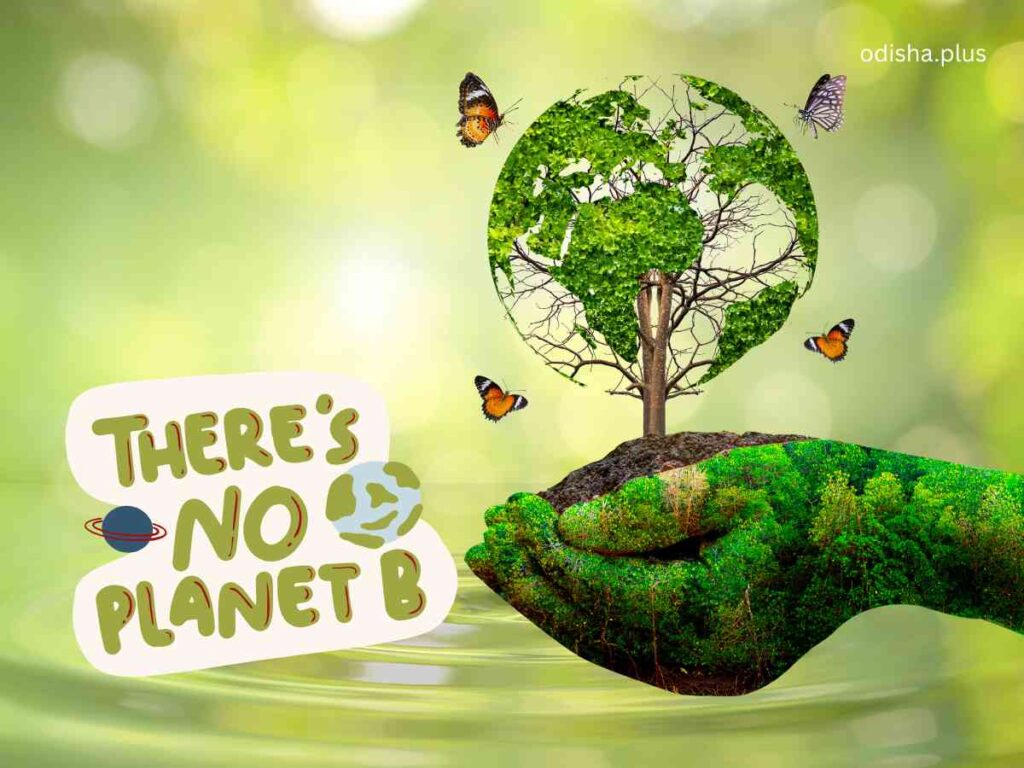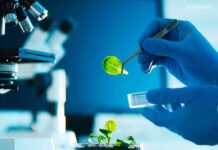As on Earth, hydrologic and volcanic processes have occurred on Mars, which are likely to have consolidated various elements into local concentrations of high-grade mineral ore
Raghunath Mahapatra

The enormous ecological and climatic devastation that had characterized the last hundred years had made the world more and more inhospitable. Humanity has used almost all the gifts of nature to us: the water, forests, and the resources over and under the Earth’s surface. The Global Footprint Network computes the date of “Earth Overshoot Day,” which officially marks the point when two factors run out of kilter: humanity’s ecological footprint and our planet’s biocapacity.
The “overshoot day” for 2025 is estimated as May 7, 2025, which indicates that we have already consumed the annual regenerative resource budget (provided by Nature) by the 127th day of the year. After this date, we are effectively “borrowing” from future generations’ resources, leading to an ecological deficit and potentially causing damage to ecosystems and our climate. If this current trend continues, by 2050, the projected 9.7 billion people of Earth may need resources of about three Earths to sustain themselves.
A new simulation study conducted by the University of Bristol claims that Earth may become uninhabitable in about 250 million years due to a superheated supercontinent (Pangaea Ultima) with soaring-temperatures and increased volcanic activity. About 92% of the earth’s surface may be unlivable for mammals including the human being. Some scientists believe that colonizing other planets could provide a solution to avoid the catastrophe predicted by the formation of Pangaea Ultima.
Various researchers claim that among planetary bodies in our solar system, Mars (about half the size of Earth and receives about 40% of the heat that we get from the Sun) is uniquely singular. It possesses all the raw materials required to support not only life, but a new branch of human civilization. The Red Planet is rich in carbon, nitrogen, hydrogen, and oxygen, all in biologically readily accessible forms.
As on Earth, hydrologic and volcanic processes have occurred on Mars, which are likely to have consolidated various elements into local concentrations of high-grade mineral ore. It’s believed that Mars holds an enormous advantage in the manufacturing of solar panels, to generate electric energy, and with the vast amount of short and medium-term geothermal power resources. With an atmosphere thick enough to protect crops grown on the surface from solar flares, it’s also believed that the planet can provide a sustainable life to the settlers.
It’s believed that Martian colonists will be able to live on the surface and multiply to large numbers (not in tunnels) and move about freely, and grow crops in the light of day. Being inspired by all these prospects, the Billionaire man Elon Musk has set up a timeline for the colonization of Mars, which involves a first crewed mission as early as 2029 and the development of a self-sustaining colony by 2050.
Some scientists and researchers believe that all these concepts of inter-planetary settlements of human beings and the scientific fictions like Robinson’s “Mars Trilogy,” which explore the idea of terraforming Mars, are conspicuously missing the very basic concept that makes a planet habitable to us. A study of the long history of Earth reveals that anatomically modern humans emerged less than 400,000 years ago, which is less than 0.01% of the Earth’s story.
The only reason that the Earth has become habitable for the human being now is because of the vast and diverse biosphere that has evolved for hundreds of millions of years of the evolution of the human being. Human beings would have been unable to survive on Earth for around 90% of its history; the oxygen-rich atmosphere that we depend on is a recent feature of our planet. The continued survival of humanity depends on the continuation of Earth’s present state without any nasty bumps along the way. It’s a fact that human beings are complex life-forms with complex needs that entirely depend upon other organisms for all our food and the very air we breathe. And replicating everything Earth offers us on another planet, on timescales of a few human lifespans, is simply impossible.
Present-day Mars is a cold, dry world with a very thin atmosphere and global dust storms that can last for weeks. The dusty air mostly consists of carbon dioxide (CO2), and the surface temperature ranges from a balmy 30ºC (86ºF) in the summer, down to -140ºC (-220ºF) in the winter, which depicts the extreme temperature changes resulting from the thin atmosphere on Mars. Its average surface pressure is less than 1% of the Earth’s, and surviving without a “pressure suit” in such an environment is a distant possibility for the human being.
What’s more, a recent NASA study determined that there isn’t even enough CO2 on Mars to warm it sufficiently. Even if we could find enough CO2, we would still be left with an atmosphere where we couldn’t breathe. Making the Martian atmosphere breathable is well beyond our current technological and economic capabilities.
From an astronomical perspective, Mars is Earth’s twin, and yet, it would take vast resources, time, and effort to transform it into a world that wouldn’t be capable of providing even the bare minimum of what we have on Earth. It’s estimated that the cost of establishing and maintaining life on Mars is immense, potentially reaching trillions of dollars. A single human mission to Mars could cost half a trillion dollars, and building a self-sustaining city with a million inhabitants on Mars may require over $1,000 trillion, which is far greater than the current US GDP of about $29 trillion.
This amount potentially exceeds the entire current world GDP.
Of course, living on a warming and degrading Earth presents many challenges. But in comparison to the challenges of terraforming Mars, or any other planet, into a viable alternative, the regeneration of the earthly resources is an easy socioeconomic and scientific proposition. There’s nothing wrong with looking to the world beyond our horizons. But in searching the Universe, human beings shouldn’t look for an escape from the existing earthly problems (which are mainly manmade). The relationship between life and a planet works both ways: while life shapes its planet, the planet shapes its life. The present-day Earth is the life-support system, and many scientists and ecologists believe that human beings can’t live without it.
Suggesting that another planet could become an escape from the problems on Earth that human beings is facing nowadays suddenly seems absurd. Astronomical observations and Earth’s geological record are clear: the only planet that can support humanity and the life-forms on which its survival depends is the one with which human beings have evolved and prospered.
The English researcher and writer on carbon foot printing and a sustainability expert, Mike Berners-Lee (who is also a Professor at Lancaster University) has aptly coined the phrase “There is No Planet B” as the central theme of his book and later on it has also been echoed by other individuals and organizations, including the United Nations and astronomers.
(The writer is a Former Senior Project Associate, HSS Department, IIT Kanpur. Views are personal.)



























